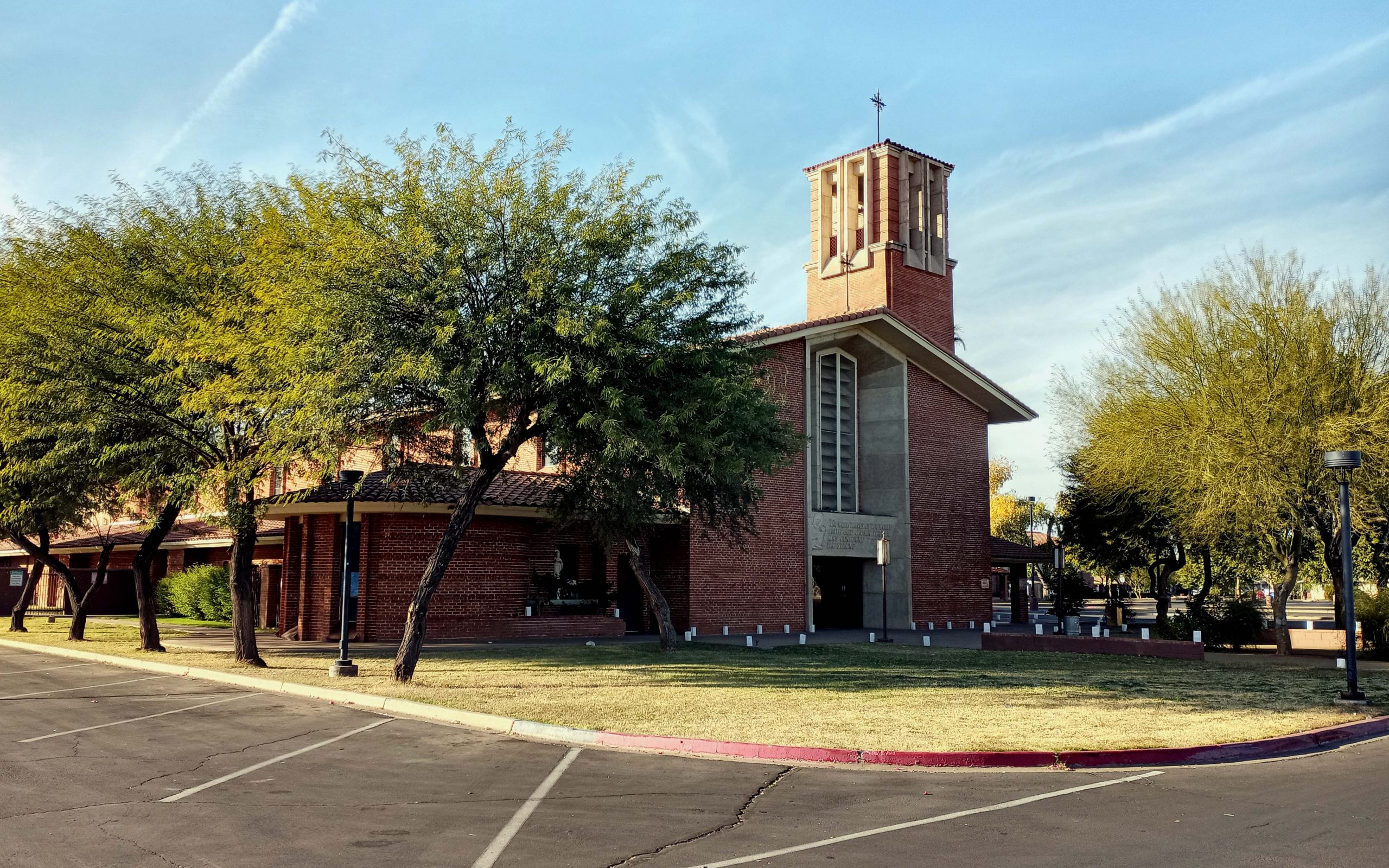Ship of Fools: St Agnes, Phoenix, Arizona, USA
 Ship of Fools: St Agnes, Phoenix, Arizona, USA
Ship of Fools: St Agnes, Phoenix, Arizona, USA
Christmas Eve mass with a beautifully played but mysteriously hidden organ
Read the full Mystery Worshipper report here
 Ship of Fools: St Agnes, Phoenix, Arizona, USA
Ship of Fools: St Agnes, Phoenix, Arizona, USA
Christmas Eve mass with a beautifully played but mysteriously hidden organ
Read the full Mystery Worshipper report here
Comments
The hour of the Mass (430pm) is preferable IMHO to the later times we have in the C of E.
BTW, I think I could manage Christmas Eve dinner at KFC, to whose offerings I'm quite partial...
I may make a return visit to the church to inspect the organ more carefully. One may wonder how the pipes speak if they are concealed behind a baffle, but apparently there are microphones picking up the sound and projecting it through good speakers.
The church's website says they have a choir. If it is still active, I will take careful note of where the choristers sit and how the organist communicates with them.
https://amp.cnn.com/cnn/travel/article/kfc-christmas-tradition-japan
A note to ChastMastr: thank you for the link to the Christmas role of KFC in Japan.
And oh yes. Hire a choir director who knows how to position his singers so that they can hear each other and make an effort to blend. I wasn't going to say this, but I'll say it now. If they had gotten any more mileage out of their "r" sounds, the neighborhood dogs would have begun to howl. Lor - r - r - r - d have mer - r - r -r - cy. Kyr - r - r - r - ie eleison. And so on.
And knows how to dress them. And can train them to sing as a choir rather than a group of singers each doing their own thing.
I agree with what you and @Portola say. There are places, of course, where the singers are up in the organ gallery at the west end of the church, so their attire doesn't matter so much. If, however, they are on view, a simple uniformity of dress (it doesn't have to be full choir dress with cassocks, surplices, ruffs, hoods etc. etc.) not only looks more seemly, but may well also give the singers a sense of belonging to a coherent and cohesive group, rather than to a collection of scattered individuals.
Does that make sense?
The gallery at the rear of the church has a baffle similar to that behind the altar, but is otherwise completely empty. The door, however, is marked "Choir." I wonder if the organ was located there at one time and if the choir sang from there.
I would say two things. First, I grew up in just such a church. I don’t think anyone in the congregation or the choir, which for a time included me, viewed it as a problem. Indeed, it was often seen as an advantage for the choir, providing a bit of freedom that we wouldn't have had had we been visible. This included the ability of the minister’s wife to roll her eyes, shake her head or put her head in her hands when he misspoke, with silent laughter from the rest of us.
In any event, there was no sense of isolation.
Second, in some traditions, worship is primarily an audial experience, with little ritual movement or other things that need to be seen. Of course, Roman Catholicism is not such a tradition.